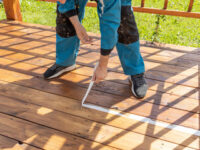Choosing a Landscaping Design
Landscape design is the process of creating a beautiful garden or home setting. A landscape designer uses art and design to combine nature and culture. They are a separate discipline from garden and architecture designers. Here are some important things to consider when choosing a design for your property. You may want to consult with a landscape designer before you make any decisions. Here are some tips to help you choose the right one. Read on to learn more. When choosing a landscape designer, keep in mind that you need to have a good idea of what you are looking for in your design.
To start with, look for examples of landscaping that you like and take ideas from them. When creating a design, consider the principles of unity, order, proportion, and repetition. These principles will help you create a beautiful landscape. You’ll be able to incorporate these into your design. You’ll also want to consider the type of plants you like and which ones will complement your home’s decor. Once you’ve created a sketch, start adding the different elements.
Creating a garden that’s aesthetically pleasing can be challenging if you’re not familiar with landscape design. Using a design theme to organize your yard is a good way to get a great result. Whether you’re looking to create an English-style garden or a tropical-themed paradise, there’s a style theme out there for you. There are many ways to incorporate a theme into your design, and you can use a design theme to achieve it.
Keeping the overall design consistent is key to making a landscape look harmonious. You can make your garden look more interesting by keeping the elements in harmony. Try using symmetry and balance to create the right look for your property. This will make your landscape appear more inviting to visitors and keep your yard looking beautiful. You can also use the same colors and design elements in different areas of the landscape, including plants, shrubs, and even hardscapes.
Consider the proportion of your landscape. You need to consider the proportion of the different parts of the landscape. Objects should be within a reasonable distance from each other and be visually in scale with the building. In contrast, blue and green colors tend to move away from the viewer. While you can’t use these colors to make your landscape look better, you can still make your yard stand out by incorporating them into your landscaping. These two color schemes will help you create a more visually appealing garden.
You can also incorporate the greenery concept into your landscape. In addition to the environment, your landscape design will also communicate your values and lifestyle to your customers. You will be promoting greenery and your company in a positive light if you have a nice-looking garden. Your clients will be happy to see that you are committed to a green environment and they will be more likely to buy your products if they can recognize that. A beautiful landscape will also be an excellent investment.
The principles of landscape design describe the way to use each of the features in your garden. A landscape plan will include the elements that will make your garden look beautiful. The principles of landscape design are the most important guidelines for any landscaping project. They are the basis of your landscaping. So, take the time to research these and find out which one works best for your property. You’ll be glad you did. A well-designed landscape will not only be visually appealing to you but will serve many other purposes as well.
The principle of balance is another important principle of landscape design. It means that the elements of a landscape must be balanced from front to back. It should not be overcrowded and be visually overwhelming. Each element of your landscape should be complementary and asymmetrical. They should be balanced so that they are in sync. If you want to create an attractive garden, use both types of these principles. Those with asymmetrical designs are most likely to be visually pleasing.
When choosing a landscaping design, you need to keep in mind the growing conditions of the plants and flowers. For example, a garden with tropical plants should have tropical plants. However, you should avoid using the same species of plants throughout the entire property. You don’t want your landscape to look boring or bland. Instead, use a variety of plants, colors and shapes throughout your yard. If you don’t have a lot of space to grow, make sure that the space is well-maintained.






